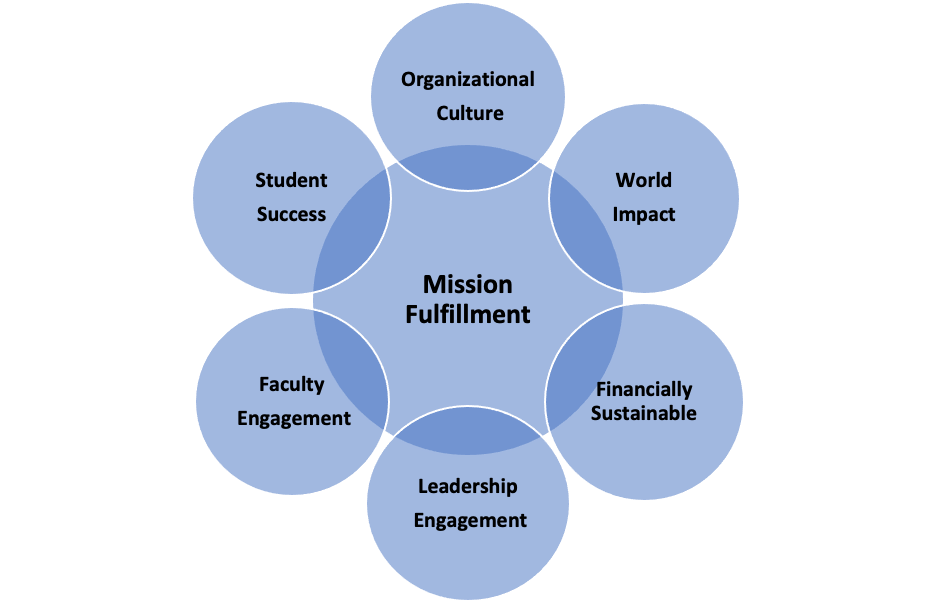How do you Monitor Fulfilling Your Organization's Mission?
If you been following our series on Exemplar Governance, welcome back. If this is your first time joining in, it’s great to have you along.
Last month we asked the question about what a ‘governance dance’ looked like, and more specifically, what dancing together as a board and chief executive entails. We made the point in the blog that boards need to focus their eyes both on the work of the board, and yet critically, always keeping their attention on MISSION.
In response, one of our readers, a colleague and former university president, Dr. William Crothers wrote to ask us a question: How do board’s monitor mission? Since that was not a question we addressed in the blog, and as Process Consultants, we ALWAYS like great questions, we decided to invite Bill into a conversation around what monitoring mission needs to look like.
At our invitation, we connected over Zoom and Bill recounted that he had served as a college president (for 21 years), “retired”, got “bored” as he chuckled, and then decided to make himself available to serve as an interim president. Six interim presidencies later (yes, six!), Bill continues to give wise counsel to college and university boards and presidents across the country.
We knew this would be a rich conversation.
So, we jumped in and turned the question to Bill: How should a board monitor mission? In principle, it seems like such a simple and straightforward question. Over the course of a 45-minute conversation, the three of us began to map out some basic observations and a visual that may be of help – whether you are a board member, CEO/President, member of an executive team, or faculty/staff member on a campus or within an organization and have been curious about how do you monitor mission.
Before we get to the map that emerged, one important note: Together, the three of us concurred that in our respective work with boards of all types (higher education, K-12, other non-profits), it is exceedingly rare to have a conversation that is focused on monitoring mission. Most boards focus on monitoring the strategic plan of the organization with a focus on several key strategic initiatives and goals. But specific measurements around mission are rare, even non-existent.
Chief among a board’s responsibilities is to ensure that the mission of the organization is defined, pursued, and achieved. So, how do we know when that is (or is not) happening? We all can think of examples of organizations that have suffered from mission drift-and certainly no responsible board member wants to be party to seeing the organization they serve lose their way.
During our conversation with Bill, we turned to thinking practically about how boards can monitor mission. We used higher education as our framing example, and offer the following illustration/map as a useful framework for other non-profit sectors including K-12 education, ministries, associational bodies, churches, and others.
At the core of the monitoring system is “mission fulfillment.” The six circles surrounding mission fulfillment are what we identified as potential proxy measures that help boards in their assessment regarding whether they are fulfilling mission: Organizational Culture, Student Success, Faculty Engagement, Leadership Engagement, Financial Sustainability, and World or Community Impact. For faith-related institutions, the spiritual dimension of organizational culture is vitally important for mission fulfillment but are often not assessed.

In each of these six areas, we suggest there be perhaps no more than 2-3 basic outcome measurements be identified to define the category. These measurements become the mission monitoring system itself.
For example: student success could be defined not only in terms of enrollment, retention, and graduation rates, but working with faculty and career services, looking at the placement of students in career-preparation internships, community service, or other measures of student growth, including at faith-based institutions, spiritual formation, and growth.
Leadership Engagement might be defined in terms of the work of the president and their team in representing the mission of the institution through their work. Examples also include opportunities to engage with accrediting agencies, church associations, higher education associations, and other external groups in articulating and serving as ambassadors for the mission of the institution.
Our point here is for illustrative purposes only. Excellent governing boards would do well to intentionally work with both their senior executive (president, CEO, executive director) as well as key stakeholders, such as faculty and staff in the case of a college or university, to carefully define what factors or elements would make up a monitoring system, and, even as critical, how they (the board) would monitor mission over time.
Bill noted that utilizing existing board subcommittees would be a great idea, especially if their role corresponded to a particular element within the monitoring system. For example, a Student Affairs Committee monitoring student success would be an effective and efficient way to ensure that the mission was being carefully guarded and monitored by a board-level committee.
We left the conversation with a sense that there is certainly more work to be done in this area. Very little is written and even less seems available on specific measurements that monitor mission. Again, the focus currently has been on dashboards that track the implementation of a strategic plan.
Perhaps you are having success in monitoring your mission. If so, what have you learned? Are you sensing that your organization or institution isn’t where it may need to be in monitoring mission?
If you are interested in connecting via Zoom to have a conversation or presentation on how to effectively monitor and assess your mission, please click here to find a time that works for you.
In the meantime, we’d love to hear from you directly as well. Please reach out to Ron at ronm@designgroupintl.com or by phone at 202-740-6344 and Lon at lons@designgroupintl.ccom or by phone at 616-516-9870.
Walking alongside you,


|
|
|
||
/Lon%20L.%20Swartzentruber%20Headshot%20(300x300).png?width=86&height=86&name=Lon%20L.%20Swartzentruber%20Headshot%20(300x300).png) |
Lon L. Swartzentruber CEO and Managing Partner, Design Group International
|
/Ron%20Mahurin%20Headshot%20(300x300).png?width=86&height=86&name=Ron%20Mahurin%20Headshot%20(300x300).png) |
Ron Mahurin Design Group International Senior Consultant |
Tags:
process consulting, core values, Identity-Vision-Core Values, strategic planning, Design Group International, Fundraising, donor relationships, leading organizational change, donor development, advancement, listening, helping, future, learning, organizational consulting, past, present, relationships, A Cause Greater Blog, visioning/Ron%20Mahurin%20Headshot%20(300x300).png)
January 31, 2023

Comments